Demolition of 70-year-old church adds to a history of vacant lots in the Historic Westside
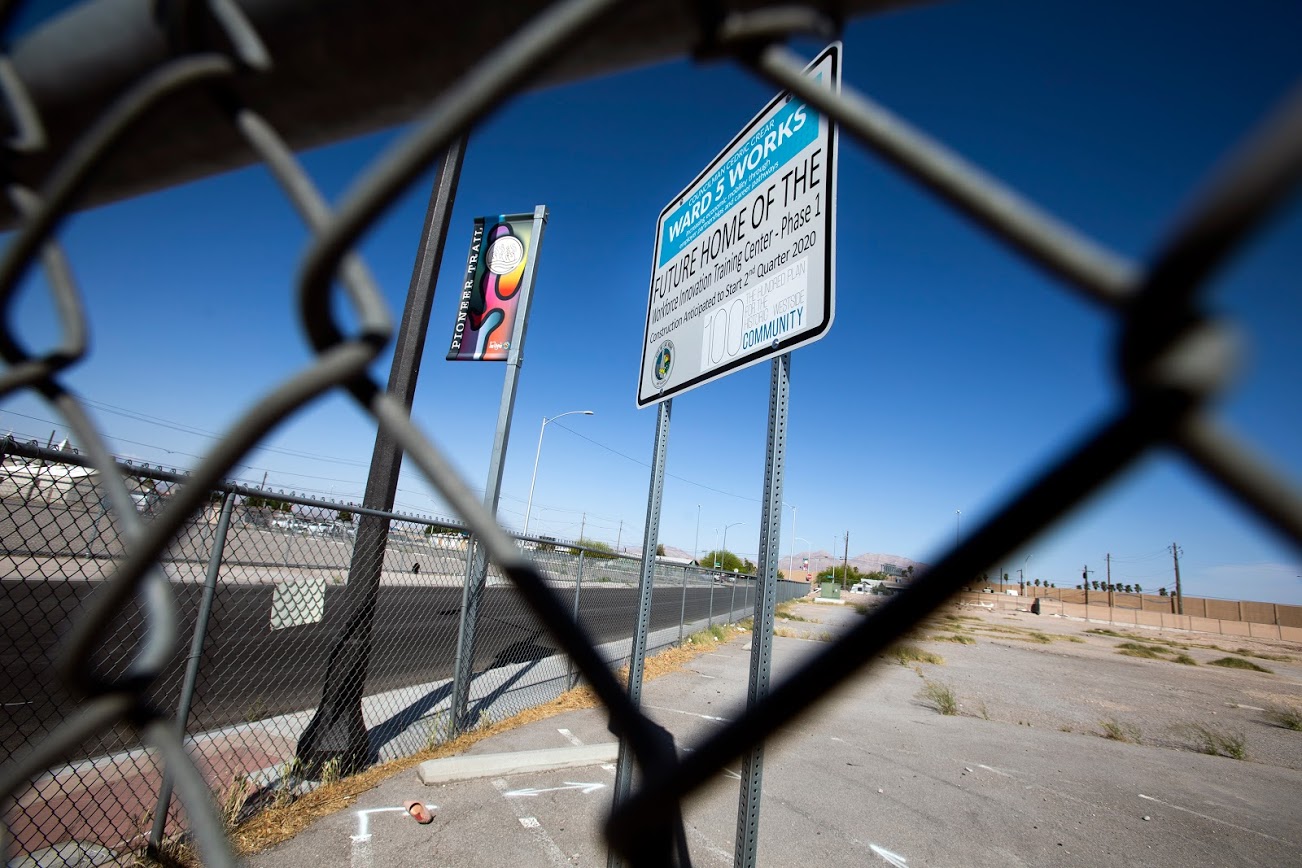
On his way to a community meeting in December, businessman Kenny Blaque stumbled upon the Greater New Jerusalem Baptist Church half in ruins. The 70-year-old church he grew up with in the Historic Westside was partially torn down with the inside exposed.
Blaque said he saw the pulpit standing amid the wreckage and started to cry.
“My mom, my dad, my family went to this church. We visited this church,” said Blaque, 50. “What happened?”
After encountering high-cost repairs for the aging building, the congregation and their community services — including a food pantry — moved from their D Street sanctuary to a new location a few miles away. They sold the old property to the city in 2018.
The city-led demolition of Greater New Jerusalem — one of the oldest buildings in the historically Black neighborhood and a short walk north from downtown — was completed in early February, using $232,600 of a grant from the U.S. Department of Housing and Urban Development to develop low-income areas.
For some Historic Westside community members, the demolition is only one example of a larger problem of the city tearing down buildings in their neighborhood, removing history and leaving vacant lots.
Though empty parcels and abandoned property characterize the area now, the neighborhood once brimmed with buildings strung together by a tight-knit community.
When segregation excluded Black residents from the flourishing city on the other side of the tracks, they created their own Las Vegas. They built lively churches, bustling businesses, warm homes and even a Westside Strip lined with casinos, restaurants and bars on Jackson Avenue, more commonly known as Jackson Street.
But now, that way of life has become folklore with fewer and fewer buildings left standing to tell the tale.
The long history of demolitions has only been worsened in the eyes of community members by the lack of development replacing what was lost.
“What they did was sit on all this property for 40, 50 years and did nothing,” said Blaque, who recently sold his family home in the neighborhood but still visits frequently. “My Westside look like shit.”
The City of Las Vegas owns almost 17 acres of vacant land across 40 plots in the roughly 500-acre Historic Westside, according to a document provided by city spokesperson Jace Radke. Radke said in an email that the city is "not aware" of any development agreements in place for its properties in the neighborhood, but there is an open request for proposals to build housing and businesses on the former site of Greater New Jerusalem.
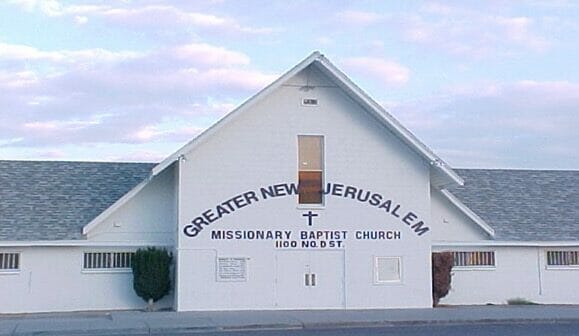
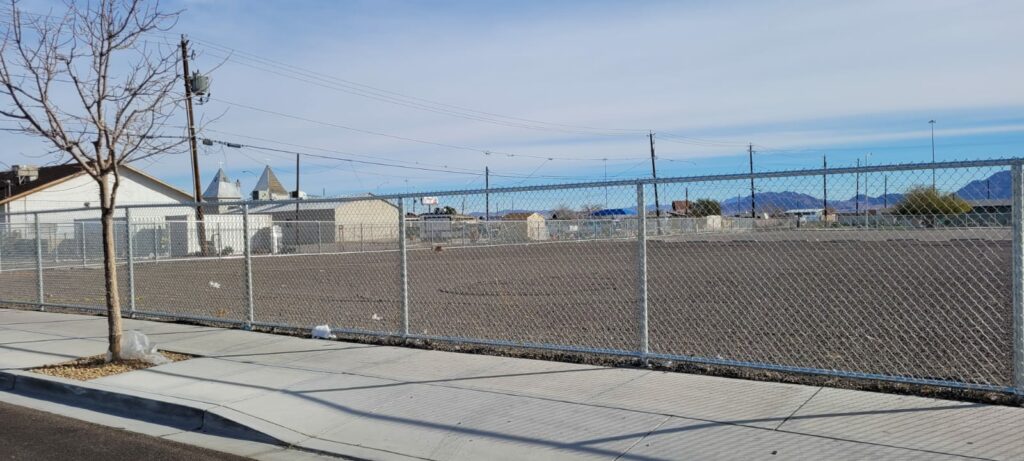
Addressing the many vacant lots in the Historic Westside is one of the goals of the city’s 2016 HUNDRED (Historic Urban Neighborhood Redevelopment) Plan that guides revitalization efforts complicated by a history of mistrust. The first phase of that plan includes more specific ideas of how to fill the vacant lots that now permeate the Historic Westside, which has a median income less than half of that for the city.
“We have this unique opportunity to partner and work together in ways that historically we haven't done,” said Kathi Thomas-Gibson, director of the Office of Community Services.
Despite the city’s plans churning in the background, seeing is believing for community members who have heard many hollow promises of development on the empty lots they have seen every day since the ‘80s.
From the infamous waves of demolitions of the Moulin Rouge Hotel and Casino, the first racially integrated casino in Las Vegas, to the quiet removal of less flashy community landmarks, seeing buildings that hold historic and emotional value to residents get reduced to dust have left many with feelings of resentment and skepticism toward the city.
“They’re not interested in revitalizing, they’re not interested in reselling them, they’re interested in running the bulldozer,” said Samuel Carroll, pastor of Calvary Baptist Church around the corner of where Greater New Jerusalem stood. “They go in, they say, ‘Oh, we need to tear these down.’ Okay. They go in and tear them down, guess what they do? They leave the land!”
A “checkerboard” neighborhood
The vacancies in the Historic Westside have left Henry Thorns describing his neighborhood of 50 years as a “checkerboard” where vacant lots alternate with dilapidated buildings.
“They done tore down our pride and our respect … our community has lost its heart,” said Thorns, 60. “Yeah, you tore down buildings, but you done tore down families.”
On just the third of a mile of Jackson Street that was the Westside’s Strip, Carroll can list several properties he’s seen torn down during his lifetime.
“They tore down the Cove Hotel. They tore the Jackson Hotel. They tore down the service station that was right next to the hotel. They tore down the Johnson’s Malt Shop. They tore down the other service station. They tore down the El Morocco across the street,” said Carroll, 75. “So they never ever intended, to me, it look like, for … the Vegas westside of town to even ever be a part of the entertainment capital of the world.”
Though other parts of Las Vegas also have undeveloped land, Thomas-Gibson said, “it’s the social and historical context that make this community unique.”
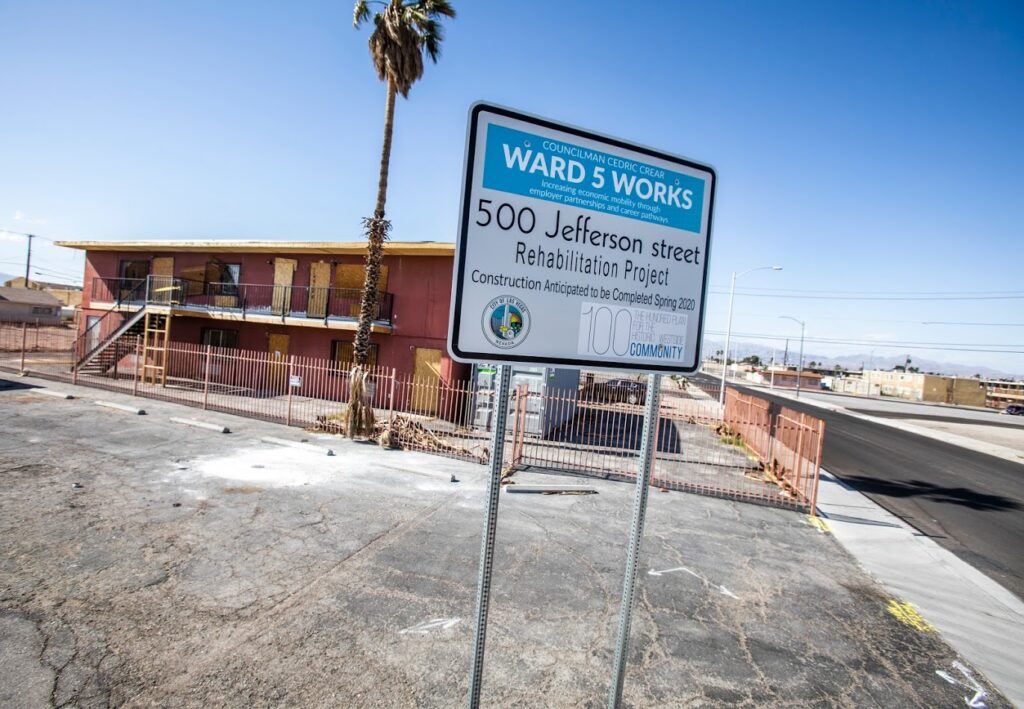
That context has also contributed to a general sense of distrust of the city.
Dana Rideout, an activist with the Historic Westside Revitalization community organization, said many residents he’s met while going door-to-door in the neighborhood fear that the city is trying to buy land and push residents out.
“This was a legally segregated city at one time. The Historic Westside is the only area that Blacks were allowed to own land. The development pattern on the Westside reflects decades of disinvestment,” she said. “The distrust is real, and it isn’t based on some nebulous conspiracy theory.”
Thomas-Gibson said she understands that it’s going to take time to build trust with community members. She pointed to the city’s HUNDRED Plan as a way to build relationships with the community and avoid gentrification.
But the city isn’t the only power behind demolitions and vacancies in the neighborhood.
For example, the 2011 demolition of the popular eatery Hamburger Heaven, which had stood on E Street since 1955, happened at the hands of nearby Second Baptist Church. A trustee of the church told the Las Vegas Sun that the church was planning to build a community center on the lot, but 10 years later, that lot is still empty.
The mounting vacancies and their effects on the community drove Beatrice Turner, a lifelong Historic Westside resident, to move out of the neighborhood last year.
Even though she still owns her mother’s Historic Westside home and her children still live in the neighborhood, Turner, 61, said she tries to go to the area as little as possible. She said it hurts her to see the community as it is when she knows how it used to be — so much so that when the time comes, she won’t be buried there.
“I went to make my funeral arrangements, and I told the man at the funeral home, I said, ‘No, don't even take my body back to a church over there, have it at the mortuary,'” Turner said. “He said, ‘you wouldn't want us to just ride your body through there?’ I said, ‘No, don’t even ride my body through there,’ 'cause it ain’t nothing to be seen.”
Defining “historic”
The Greater New Jerusalem building was the setting for many cherished memories.
Blaque’s mother, Wallean, was an evangelist who preached there. He remembers the church as being consistently packed with worshippers who enjoyed a soulful choir and a potent service. Like many churches in the area, it was a cultural hub on Sundays. Residents gathered after services ended, talking with friends and grabbing a bite to eat at Hamburger Heaven just a few blocks away.
“That's what New Jerusalem was to us,” Blaque said. “It was just a place where our family, our friends, we get to worship.”
For some community members, the demolition of the church and other buildings seems hypocritical to the city’s branding of the neighborhood.
“They have this big sign that says ‘Historic Westside,’ yet they won't preserve any buildings that have historic value,” said Rideout, who lived in the neighborhood during the 1970s but reconnected with the community through Carroll, his longtime friend.
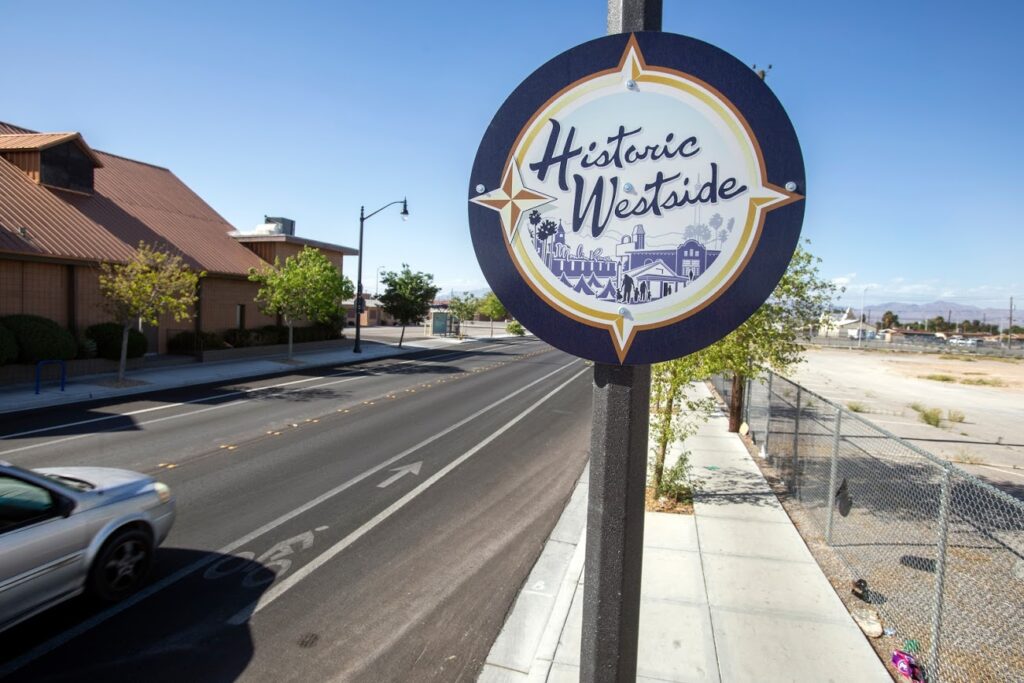
A building is eligible for protection from the city — meaning that it is unable to be changed or torn down without the approval of the Las Vegas Historic Preservation Commission — when it’s older than 40 years and is “significant to an aspect of Las Vegas history or significant to an architectural design distinctive to when it was constructed,” according to Diane C. Siebrandt, the historic preservation officer for the city. The property owner must apply for the protection.
Bishop James Rogers Sr., the senior pastor of Greater New Jerusalem since 1987, said he and church leaders didn’t think about applying for historic protections for the building amid the logistics of trying to sell the property and build their new church on Martin Luther King Boulevard.
Only after the church’s real estate agent approached the city and sold the building in 2018 did other community members express a desire for historic protections, according to Rogers. He told those community members that he would support the effort, but that ultimately, the building and the decision belonged to the city.
“I would love to have that happen. I'm in the community, I'm not going anyplace,” he said. “But that's not my call right now to determine whether or not there's gonna be a historic site.”
Though he said he wasn’t aware of the city’s plan to tear down the building when he sold the property, Rogers said he didn’t sell with conditions.
Rideout said the city opting to demolish Greater New Jerusalem after having the opportunity to give it historical protection is a “prime example” of the city’s real intentions, and emphasized that revitalization doesn’t have to come at the cost of removing history.
But the city disputes that it is tearing down history. Because the funding for the demolition came from HUD, the city had to compile a report evaluating whether the property was eligible for historic listing before tearing down the building.
“It was determined that the church was not eligible for historic listing as it was not associated with a person or event significant to the history of Las Vegas, and its design was not considered distinctive to its time period. It was therefore demolished,” Siebrandt said in an email through the city spokesperson.
The Nevada State Historic Preservation Office approved the demolition in 2019.
But Thomas-Gibson said the Historic Preservation Office’s finding does not have bearing on the value the building had in the community.
“That doesn’t mean it didn’t have value to people in the community,” Thomas-Gibson said. “It means that it was not historic, and it didn't meet that definition.”
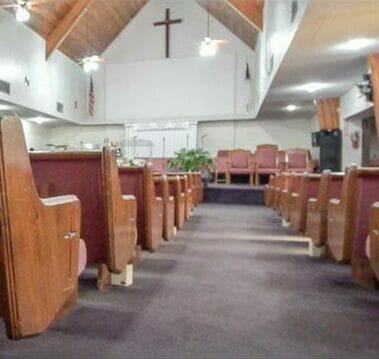
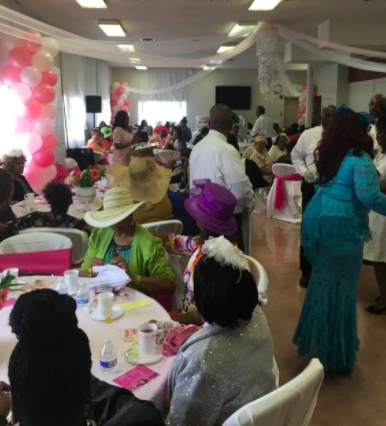
“Absolutely every effort”
Though the plans had been in motion for several years leading up to the demolition in December 2020, seeing bulldozers tearing down the church shocked many community members.
Thomas-Gibson said her office and the city made “absolutely every effort that we can humanly make” to ensure that stakeholders knew about the Greater New Jerusalem demolition. However, she added that she understands how community members might miss the city’s efforts in the throes of everyday life.
“I often say to folks, ‘it's fine to say I wasn't aware,’ that’s an accurate statement,” she said. “It’s not an accurate statement to say the city didn't try to communicate with the community.”
Thomas-Gibson said the city did both formal outreach through workshops, emails and flyers as well as informal outreach through meetings with small groups, including the Historic Westside Neighborhood Association, over the past two years. The demolition also had two 30-day public comment periods in January 2019 and May 2020 mandated by HUD, and was discussed in several workshops for the HUNDRED Plan, according to the city.
All of the community members who spoke with The Nevada Independent said they thought the city did not properly notify the community that the church would be torn down. They said the city isn’t doing enough on-the-ground work to inform the neighborhood about news and meetings, especially because some residents do not have Wi-Fi to receive city emails.
In the 2019 demolition agreement for Greater New Jerusalem and three other buildings on nearby parcels, the city and the State Historic Preservation Office determined that the demolitions might have had adverse effects — potentially affecting characteristics that would qualify a building for a position on the honorary National Register of Historic Places — on seven properties. Two of the properties are eligible for a national historic designation, according to the agreement.
Carroll, whose church was listed as one of the seven properties, said the city did not notify him about the potential for adverse effects. His church is eligible for the National Register.
Another nearby property owner learned about the demolition of Greater New Jerusalem in the summer of 2020 during a conversation about revitalization efforts in the area, but said the city never directly informed them that the property might be adversely affected.
The other nearby property owners did not respond to requests for comment or could not be reached for comment.
“In the name of progress”
As with other buildings that have been torn down, Carroll said he thinks the Greater New Jerusalem building could have been saved.
The building’s spacious multipurpose room could have been used as a community center, he said, especially as the neighborhood doesn’t have another space suitable for large gatherings, such as weddings and community meetings.
“The community has so little to even operate with,” Carroll said. “[The demolition] just didn’t make a lot of sense to me. And I don’t think it made a lot of economic sense.”
Prior to selling the church to the city, Rogers said that the building “was in desperate need of repairs” and that the costly work that needed to be done would have required most of the structure to be torn down and built back up.
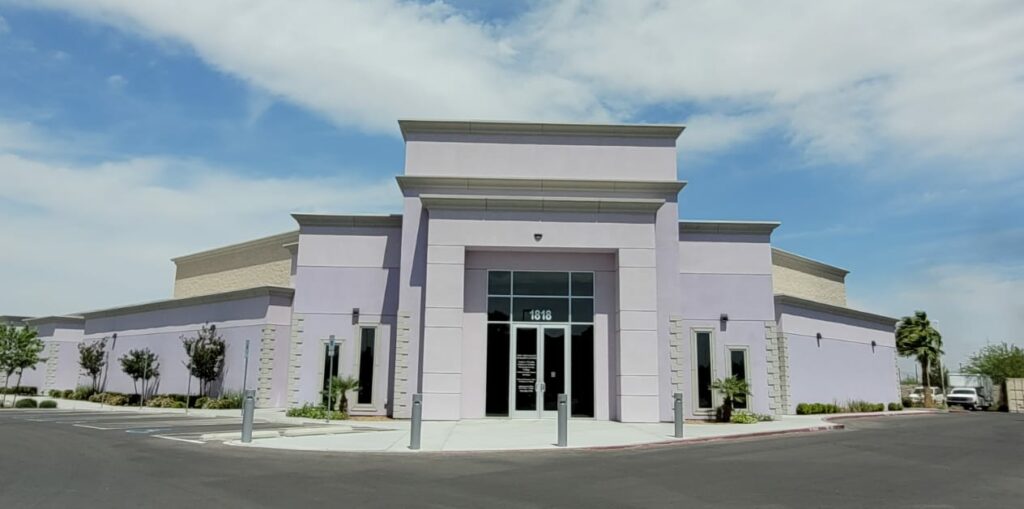
While sitting unused, the church had been vandalized and occupied by squatters, according to Thomas-Gibson. The air conditioning unit was taken from the roof and copper was ripped from the walls.
Thomas-Gibson said that she has shared this information with residents and activists, but that “they don’t believe me.”
“I get why people wouldn't necessarily accept it as factual — if they don't trust the government — something that a government person says. I understand it. I respect it,” she said. “It doesn’t change the fact.”
But some community members challenged that claim and suggested that the city could and should have protected the building.
Carroll said he supports redevelopment, but would have preferred the city develop on one of the already vacant lots instead of tearing down an existing building.
“I’m never against progress,” Carroll said. “But I just think to tear that all down in the name of progress, I thought it was wrong.”
The city is requesting development proposals for a five-story building with businesses on the ground floor and mixed-income housing on higher floors for the site of the former Greater New Jerusalem.
And though Thorns said he would like to see the land be used for economic development — specifically a Black-owned bank — Thorns said he is still going to miss having Greater New Jerusalem as a neighborhood landmark, one he said he would sometimes pass as many as five times a day.
“It hurts when you see a building tore down. It’s a part of your history disappearing that you'll probably never get back. Because when they build something there, you gonna forget,” Thorns said. “You gonna forget, ‘Oh. The New Jerusalem was there.’ The new peoples come here ain’t gonna never know there was a New Jerusalem there.”
